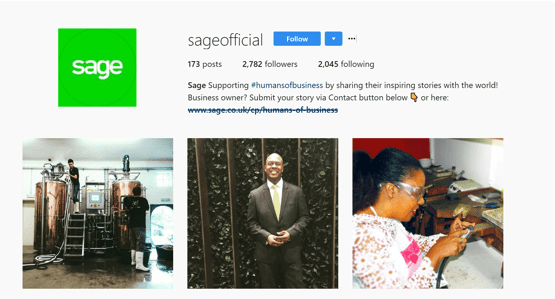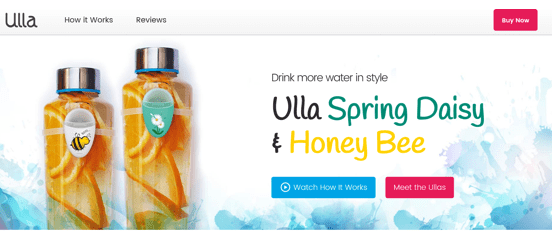Examples of how build your ecommerce brand in a changing landscape
Research suggests many people are getting fed up of being ‘sold to’ thanks to incessant retargeting, yet we’re buying online more than ever before. That’s the oxymoron of our current ecommerce industry — how to sell, without seeming to sell.
In a saturated marketplace, marketers need to create more immersive shopping and retail experiences. Largely, ecommerce brands are evolving to meet the demands of the fractured user journey and the fractious user.
How?
Big brands tend to throw all their money and weight at influencers and programmatic advertising, whereas smaller brands focus on communities and stories. New retailers periodically flood the markets, capitalizing on the latest consumer trends and cashing in on the ‘fad economy’.
So what ecommerce evolution (or devolution), can we expect in the coming year? (Before you read on — check out our marketing megatrends for 2017 to be fully informed).
Together in logistical dreams....
A huge logistical evolution has enabled a new breed of digital commerce— the popularity of dropshipping means that traditional logistical challenges are no more. With no need to even hold stock or have an office, ecommerce brands can operate from anywhere.
At the same time, online mega-brands like Amazon are heavily investing in their logistical framework, even opening up physical stores. By investing in all the latest delivery tech, from delivery drones to shipping routes, Amazon are trying to buy up a delivery network that will enable them to offer next-day or same-day delivery almost anywhere in the world.

Will the future of the industry revolve around who can get their products to consumers the fastest? Yes, probably.
It’s important that brands not only focus on fast and frequent delivery, but also the quality of the delivery experience — from packaging to emails, an awesome delivery experience should not just be an afterthought. Personalised packaging, fun copy, delivery follow-up phonecalls — be creative; but also recognise that almost nothing trumps speed and accuracy.
Humanising the conversion funnel — pay attention
Old-hat sales peddled at business schools around the world doesn’t readily translate into a social-media fuelled relational economy. Instead, successful ecommerce businesses have humanised the conversion funnel by honing in on customer experience, rather than pushing for sales at every opportunity. Creating holistic conversion funnels is supported by data mining— with more data, brands are able to get granular and track minute customer actions.
The increased sophistication of conversion-tracking gives brands the chance to build relationships with customers and clients through web content. A big part of that has been user-generated content — and everyone is doing it — from B2C fashion brands, to B2B software startups. The beauty of user-generated content is that it’s content with a much longer shelf-life, and better engagement rates, than promotional marketing messages.
Focusing on infinitesimal customer decisions, as well as overall brand consideration, gives ecommerce companies the chance to invest in longevity.

Sage’s Instagram completely bypasses their product — opting for small business and entrepreneur stories instead. It certainly makes for a more engaging and colorful feed — a great strategy for brands with less ‘photogenic’ products.
Make sure that your conversion funnel is not oversimplified, and that you are tracking customers along the whole of their journey with you. If you haven’t already, start using UGC as part of your content strategy.
Localised influencers & community management
Rather than sell to huge audiences, brands need to sell to small captive communities; so many have gone out scouting for micro-influencers — people who don’t have millions of followers, but have the right ones. The beauty of this more targeted, localised influencer marketing is that brands can save both time and money by reaching a more susceptible audience faster.
The key to successful influencer marketing on a smaller scale is relationships — built on the principles of quality content and exchange, as well the usual spending on ads and owned content. Some brands are getting very good at community outreach, becoming managers of their very own communities.
With community management comes crowdsourcing and funding, and crowdfunded ecommerce businesses are becoming increasingly common.
See whether your business can start to create a sense of community around your products, services, and people. Get out there and be visible — that’s the first crucial step. You need to start working on and refining your brand voice.
Digital thoroughbreds come out to play
Ecommerce is growing up, and becoming increasingly divorced from retail. Abandoning traditional retail models makes ecommerce businesses much more competitive and agile. Ecommerce brands skip retail altogether, favouring a digital strategy that revolves around social media and bought content. Ecommerce brands will take on CRO specialists, UX designers, and SEOs in order to compete in a forward-thinking marketplace.
With online-only ecommerce ventures, people can successfully practice geographic arbitrage, running businesses from laptops in Asia — fundamentally changing the way in which goods flow. With low overheads and an increasingly mobile workforce, digital brands can compete with retailers on price and experience — as long as they get the products to the customer fast enough.

Brands like Ulla.io make the most of the new digital marketplace with a cool, trendy product (a smart water meter), loads of social media advertising, and branding with a decidedly universal appeal. They look like they could easily be a Silicon Valley hydration startup, but they are actually operating out of Slovenia. A great example of how ecommerce favours the innovators.
There’s now truly a specialist store for everything — from hot sauce and matcha tea, to matte nail varnish and vegan leather bike accessories. Whether it’s a fad or not, doesn’t matter — these niche stores serve a small, yet dedicated, specialist audience and disrupt the traditional ‘get it all here’ retail model. Consumers are increasingly looking for one-of-the-kind products.
On the merchant side, more and more individuals are signing up for the ecommerce ride; we’re seeing a rise in people starting online stores at home — Shopify expertly selling the ecommerce dream to hungry wantrepreneurs. This democratisation of commerce is a great phenomenon in many ways, but it also leads to tougher competition, and not all stores will make the grade.
Think about how well your brand serves a niche need, and whether you have a good grip on your current competition? Is there an emerging market or start up coming up behind you? Try to stay one step ahead — with the route to market being so quick, you need to be super switched on.
The next web is visual and spoken
Is selling online via a traditional website dying? Mobile, social media, VR, AR, wearables, IoT, Alexa – merchants are having to adapt to new sales environments fast — and most of these environments are completely led by visual content or spoken words.
The very texture of selling has changed and evolved – it’s no longer about flat experiences, and you are no longer tied to a single point of entry or exit. Ecommerce is now more about networks and connections, and content has to reflect that by being infinitely flexible.
One of the most exciting recent developments is the imminent arrival of visual commerce — shoppers buying products straight from pictures and videos. An integrated experience where users can search for (and buy) similar products to the ones they snap on their smartphones, isn’t that far away. Brands needs to be at the forefront of these new visual trends — trailing behind could be fatal.
At the same time, brands shouldn’t just focus on the ‘here and now’ either. So if visual interfaces are of the now (or the very soon) — could the next ecommerce be no interface at all? Gartner predicts that by 2018, digital assistants will recognise customers by face and voice across channels, and by 2020, 85 percent of customer interactions will be managed without a human (source). We could be eventually heading towards a completely AI-led environment where storefronts come together for a user, only to be swiftly disassembled when they leave.
Keeping in mind that these are some of the potential industry developments, what can we all do as marketers? Certainly investing in visually-appealing content, social selling, and looking into voice search seem like a good place to start. You don’t have to throw a lot of budget at this right now, but you do need to constantly think about your future (and in the UK, you may qualify for corporation tax relief under Research & Development).
So what can merchants today do to keep up with the latest ecommerce developments?
- Review your logistical framework and your ability to deliver products fast, or develop an alternative delivery and packaging model (subscription boxes)
- Review your conversion funnel and include user-generated content in your sales funnel
- Work with local micro-influencers more — start your first outreach campaign
- Get as clued up as possible on the latest digital developments
- Appeal to a committed niche market
- Invest heavily in visual content — including GIFs and live video
- Start thinking about the next stage of commerce NOW.
What developments excite you the most?

Thanks to Patrick Foster for sharing their advice and opinions in this post. Patrick is an ecommerce consultant.When he's not in the trenches with clients or his own projects, he loves to get social and share his experiences from the ecommerce coalface. He is a passionate customer advocate, and loves spending his time researching emerging trends and technologies.






 Thanks to Patrick Foster for sharing their advice and opinions in this post. Patrick is an ecommerce consultant.When he's not in the trenches with clients or his own projects, he loves to get social and share his experiences from the ecommerce coalface. He is a passionate customer advocate, and loves spending his time researching emerging trends and technologies.
Thanks to Patrick Foster for sharing their advice and opinions in this post. Patrick is an ecommerce consultant.When he's not in the trenches with clients or his own projects, he loves to get social and share his experiences from the ecommerce coalface. He is a passionate customer advocate, and loves spending his time researching emerging trends and technologies.



